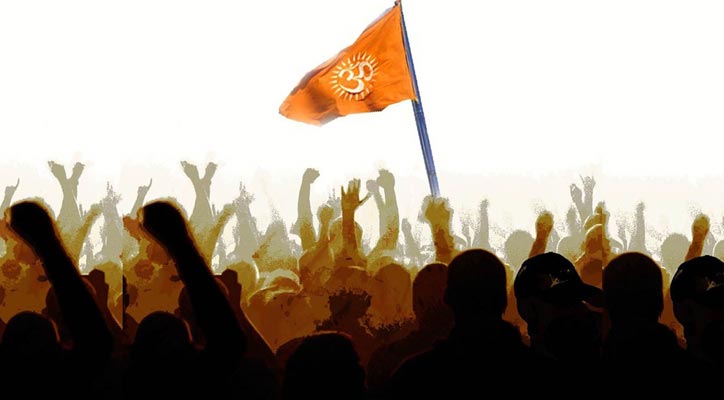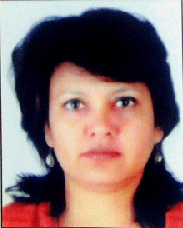
Just less than a month before voting for the Uttar Pradesh Assembly three Ministers belonging to Other Backward Castes (OBCs) such as Swamy Prasad Maurya, Dara Singh Chauhan and Dharam Singh Saini resigned from Adityanath Government and BJP. Many other MLAs have also left the party.
Hindutva and Social Engineering
By skilfully employing social engineering the BJP coalesced Dalits and most backward among OBCs with high castes to form a Government and provide the overarching Hindutva framework giving primacy to Hindu identity over caste affiliations. The social engineering conceived by Hindutva leaders created impressions among the Dalits and most backward among OBCs that they would get justice which was denied to them by Samajwadi Party and Bahujan Samaj Party Governments claiming to champion only Yadavs and Dalits respectively. Such a social engineering excluded Muslims and other minorities completely and used the support of the Dalits and OBCs to aggressively and violently target them. The Dalits and OBCs became pawns in the hands of the Hindutva leaders in their open and vicious campaign against the minorities in UP where Muslim population constitutes almost 20 per cent and in some of the districts more than 30 per cent. Chief Minister Adityanath was so sure of the resilience of the Hindutva architecture encompassing the Dalits and OBCs that he audaciously said that in the forthcoming elections BJP would get votes of 80 per cent of people as opposed to the opposition it would face from 20 per cent. Reading in between lines an unmistakable message is driven home that 80 per cent refers to Hindu population and 20 per cent to Muslim population. While such Hindu- Muslim narrative was pushed forward, the narratives rooted in other caste identities and the resultant deprivations they suffered were completely subordinated to Hindutva and lost sight of. The social engineering in UP framed a larger Hindutva identity and attained primacy and currency over all other identities.
Social Justice Taking on Social Engineering
The resignation of three Ministers belonging to OBC on the ground that social engineering project of Hindutva negated their social justice agenda offers critical lessons to checkmate and eventually defeat Hindutva by mobilising people on secular issues. The social justice plank encompasses in its scope social, educational and health issues of people as opposed to social engineering of Hindutva which often polarises society and excludes Muslims and other minorities because of their faith.
The manner in which social justice agenda is now becoming central to UP politics reminds the Mandal era when issues of OBCs were defining political persuasion in the State and putting a check on Kamnadal, the Hindutva agenda for construction of Ram Temple in place of Babri Mosque. It is because of social justice agenda that for almost 15 years BJP could not acquire power in UP. That development is of paramount significance to understand the dynamics of political churning taking place in UP, considered to be the laboratory of Hindutva in north India. All the Ministers who resigned from the Yogi Government were part of Kanshi Ram’s movement anchored in the social justice agenda.
Does it mean that the Hindutva project which had become very vicious and exclusive and of late some Hindutva leaders calling for arms, genocide of Muslims and end to resrevation system for Dalits and OBCs is being dented by social justice agenda championed by Dalits, OBCs and most backward among them? The answer seems to be in the affirmative.
Social Justice Agenda of Lohia
Dr. B R Ambedkar described the caste system as “an ascending order of reverence and descending order of contempt”. He also said that Hindus could hardly be put together because of their caste identities which are mutually exclusive and define each individual and determine his or her identity and social status for the whole life. Castes are diverse and its main feature representing the “ascending order of reverence and descending order of contempt” remains intact in the larger scheme of Hindutva which ostensibly claims to obliterate hierarchies based on pollution purity syndrome or other social coordinates. Ironically the political leaders representing the backward castes forming part of the diversities of caste system are now interrogating the Hindutva represented by BJP and Yogi and posing a huge challenge to their social engineering through the plank of social justice.In fact a peep into political history of UP reveals the social justice and power sharing formulation of Samyukta Socialist Party(Samsopa) which gave the slogan “Samsopa ne Bandhi Ganth, Pichde Paye Sau Se Sath”.(Samsopa has resolved that backward sections would get sixty out of 100). It is attributed to Rammanohar Lohia.
Kanshi Ram and Social Justice
That legacy of social justice was deeply reflected in the movement launched by Kanshi Ram and is now getting revived in the context of Hindutva which is getting super imposed over other identities without addressing the deprivation of social, political and economic justice which impair their life and dignity. The social justice plank seems to have prevailed over the polarising narratives represented by 80 per cent vs. twenty per cent.
Eighty Five Percent Vs Fifteen Percent
Swamy Prakash Maurya after joining Samajwadi Party stated that contrary to Yogi’s claim of 80 per cent versus 20 per cent his party would get 85 per cent and BJP would be reduced to 15 per cent only. (panchaisi to hamara hey, pandra mein bhi batwara hey”(Eighty five is hours and there is division within fifteen).
Hinduvad Questioned
O P Rajbhar who broke his party’s(Suheldev Bharatiya Samaj Party ) alliance with BJP and formed a new one with the Samajwadi Party very sharply said in an interview with Arfa Serwani of the Wire that in the name of Hindu backward castes were mobillised for getting a huge mandate and forming a strong Government in UP and later they were excluded from governance process and exploited. He asked, “Is it Hinduvad?” He went to the extent of denying that he is a Hindu as he never had a thread ceremony and put a sacred thread on his body.
He informed that his plea for caste census, free medical treatment for people, free education for them and other basic necessities were never paid any attention by Yogi Government. He even informed that jobs meant for OBCs and Dalits were given to the general category people on the ground that eligible candidates from OBCs and Dalit community could not be found. He dismissed such claims as a lie. He charged that when he asked for his Hak (Right) he was dubbed as Hindu virodhi (against Hindus). He asserted that because Yogi Adityanath hailed from Tahkur caste he ensured that in UP Thakurs ruled in every sphere and OBCs, Dalits and even some forward castes were put to harassment. When he was asked as to why he was worried about the issues of OBCs when Ram temple is being constructed, the magnificent Kashi corridor project has been launched by Prime Minister and attempts are being made to take temple issue in Mathura, he retorted by saying that “If temple is constructed will the poor get education? Can the children of the poor become doctors, engineers? Will they get good education and employment?” He accused the BJP Government of diverting attention of people from primary issues and when election comes its leaders talk of Hindu-Muslim narrative to polarise society.
Social Justice Agenda Triggered by Plight of People
The social justice plank so eloquently articulated by OBC leaders after leaving BJP and Yogi Government flows from the objective conditions prevailing in Uttar Pradesh and their respective constituencies. Hindutva supremacist outlook and domination of Thakurs in administration have made other castes feel unwanted and neglected. Lack of employment opportunities for the youth and their deepening frustration attributed to Government's failure to create livelihood opportunities and even fill the vacancies in different departments have made them hopeless. The worst sufferers are Dalit and OBC students who have suffered because jobs which they were supposed to get on account of reservation is not being followed by Yogi regime. Privatisation of several sectors of the Government is seen by them as a method to put an end to reservation system. The continuously rising prices and inflation have been unbearable and back breaking. The devastating second wave of the COVID pandemic marked by widespread death due to lack of oxygen and hospital facilities is fresh in the memory of people who are now passing through the third wave. The stray cattle problem has arisen primarily due to policies of Yogi regime putting severe restraints on cattle trade being carried on by Muslims, OBCs and small farmers belonging to most backward of castes in the caste hierarchy. The menace of stray cattle on the farms and agricultural fields has resulted in loss of crops severely affecting agricultural income of farmers the majority of whom are from OBC category. The flattening of human security and loss of livelihood opportunities have caused existential crises for people and the worst victims are the people in lower end of the caste hierarchy. Minorities are in perpetual fear because of the policies of exclusion followed by the Yogi regime.
Reservation Policy Not Followed
The introduction of quota for Economically Weaker Sections and the non-fulfilment of reservation quota for Dalits and OBCs generated an impression among backward communities that reservation system is in jeopardy and their share is denied to them. The movement of farmers against farm laws brought to limelight the plight of farmers most of whom are from backward communities and minority sections of society.
The objective material conditions made the constituents restless and so their representatives banking on their mandate are now getting actuated to target BJP and Hindutva which they think are responsible for their plight and marginalisation. Therefore, the social justice agenda they are reviving and making it their anchor marks a radical departure from the ritually filled progarmmes of Prime Minister be it in Ayodhya while performing elaborate religious ceremonies in connection with the construction of Ram temple or the launching of Kashi corridor project.
Farmers’ Movement Neutralised Polarisation
The BJP caused polarisation among farmers in 2013 and as a result the gulf created among them in the name of faith helped the party to reap electoral dividends in general elections in 2014 and 2019 and Assembly elections in 2017. The year long farmers’ movement united the Muslim and Hindu farmers in the western UP and they have resolved to remain united and not to support BJP.
Gender Justice Agenda
While farmers’ movement neutralised polarisation among farmers and put them against BJP, the social justice plank combined with the gender justice dimension of Congress reflected in the fielding of women in 40 per cent of Assembly seats in the UP is investing the State politics with new dimensions which will guide the whole nation. Odisha Chief Minister Naveen Patnaik had set the trend during 2019 general elections in fielding women candidates from Biju Janata Dal in 33 per cent of 21 Lok Sabha seats of the State. All these are strengthening the foundations of politics based on people’s issues and not solely on their faiths. Akhliesh Yadav said in November that a "pincer" movement of angry farmers (upset over the now-scrapped farm laws) in the western UP and a "rainbow alliance" of regional parties in the east would wipe out BJP in the election.
Hope the social justice and gender justice planks being woven into UP politics will give a new depth, content and dimension to politics based on secularism and progressive values associated with the idea of India.
#The author served as Officer on Special Duty and Press Secretary to President of India late Shri K R Narayanan and had a tenure in Prime Minister’s Office and Joint Secretary in Rajya Sabha Secretariat. Views expressed in the article are in his personal capacity.

